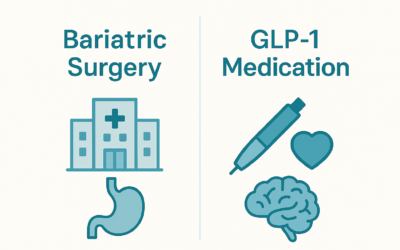Emotional eating can feel like an overwhelming cycle — one that starts with an emotional trigger and ends with a deep sense of guilt and frustration. But the good news is that it can be broken. While it’s true that most of us don’t reach for a salad when stress or sadness hits, the urge to emotionally eat is manageable once we learn the tools to confront it head-on. This article will explore the practical, concrete steps you can take to overcome emotional eating and reclaim your relationship with food.
Understanding emotional eating and why it matters
Before we talk about solutions, it’s important to understand why emotional eating happens. Emotional eating isn’t really about hunger at all; it’s about using food as a way to deal with emotions. When emotions run high, food becomes a coping mechanism — something that offers temporary comfort. It’s a habit that forms over time, and like any habit, it can be changed.
The key to overcoming emotional eating isn’t just about dieting or self-control. It’s about recognizing why it happens in the first place and how you can address those underlying emotions without reaching for food.
Step 1: Know your emotional eating triggers
Every behavior has a trigger. With emotional eating, the first step toward change is identifying your specific triggers. Common ones include stress, anxiety, boredom, and even positive, happy emotions.
Maybe it’s the end of a long, exhausting day at work or a moment when you feel anxious about an upcoming deadline. Maybe it’s the Friday night routine of rewarding yourself with comfort food after a tough week. Maybe it’s excitement over finding out you’re finally going to that concert you’ve been waiting months for. Positive moments — just like stressful ones — can prompt emotional eating, with the desire to extend joy through the comfort of food.
But beyond general triggers, personal patterns often tell a more specific story. For instance, you might notice that stress from work leads to cravings for sweets, or that you turn to snacks when you’re bored in the evenings. Keeping a “food and mood” journal is one of the most effective ways to spot these patterns. Every time you eat, write down what you ate and how you were feeling just before. After a few days, clear patterns will emerge, and you’ll begin to see which emotions are tied to your eating habits.
Step 2: Practice mindfulness in the moment
Mindfulness isn’t just a trendy buzzword; it’s one of the most powerful tools for overcoming emotional eating. When you eat mindlessly, you disconnect from your body’s natural hunger cues. Being unmoored from your bodily sensations like this leads you to eat based on emotion rather than need. But by practicing mindfulness, you can bring awareness back to the act of eating.
Start by asking yourself a simple question before eating:
Am I actually hungry?
If the answer is no, pause and identify what emotion you’re feeling. Are you stressed, bored, sad? Once you know what’s going on emotionally, you can respond in a more intentional way.
Even when you’re physically hungry, practicing mindful eating can help keep you from overeating. Pay attention to each bite, savor the flavors, and slow down. By being fully present, you’re less likely to eat out of habit or let your emotions drive your food choices.
Step 3: Find healthy coping mechanisms
Once you’ve identified the emotions that drive your eating, the next step is finding healthier ways to cope with those emotions. Instead of turning to food, try finding activities that provide comfort or relief in a non-food way.
Here are a handful of suggestions:
- Exercise: Physical activity releases endorphins, which naturally elevate your mood. Whether it’s a quick walk around the block or a full workout, exercise can help reduce stress and redirect emotional energy.
- Journaling: Writing down your feelings can be a great way to process emotions — without using food as a crutch. Instead of eating to numb or escape, journaling helps you face those feelings head-on.
- Meditation or deep breathing: These practices help ground you in the present moment and can reduce the intensity of your emotions, making it easier to resist the urge to eat.
- Pick up a hobby: Whether it’s reading, painting, gardening, or any other hobby, doing something you love can serve as an excellent distraction from emotional triggers and not just when it comes to emotional eating.
Developing a “coping toolbox” is one of the best ways to prepare yourself for stressful moments. When the urge to eat hits, you’ll have a list of go-to activities that can fill the gap without food.
Step 4: Break the emotional eating reward cycle
We often use food as a reward, whether we do it consciously or subconsciously. After a long day or a tough accomplishment, many of us automatically turn to food as a way to treat ourselves, and it’s important to understand why we’ve built this association and begin to shift it to non-food rewards.
Start by brainstorming other ways you can celebrate achievements. For example, you might reward yourself with a movie night, a relaxing bath, or purchasing something (something non-food, that is) you’ve had your eye on. The idea is to separate food from the idea of reward — once you do, emotional eating will lose its power as a go-to reward mechanism.
Step 5: Address the root of your emotions
Emotional eating often serves as a mask for deeper issues. And while it’s helpful to have healthy coping mechanisms in the moment, it’s equally important to address the root cause of those emotions in the long term.
If stress is a major trigger, it might be time to look at where that stress is coming from and make lifestyle adjustments to manage it better. If loneliness or sadness are behind your cravings, finding ways to build social connections or seeking support through therapy can help.
Sometimes, the emotions driving your eating might feel overwhelming or too complex to deal with alone. In those cases, it can be helpful to seek out professional support. Therapy or support groups can offer a safe space to process emotions and build healthier coping strategies.
Step 6: Plan ahead and stay prepared
One of the most practical steps in combating emotional eating is simply this: being prepared. When you don’t have healthy food options readily available, it’s easy to default to unhealthy choices when emotions take over. Meal planning and prep make it much easier to avoid this pitfall.
So take time each week to plan your meals, and prepare snacks that align with your health goals. That way, when the urge to eat strikes, you’ll have healthy options on hand and won’t be as tempted by emotional eating habits.
Step 7: Allow flexibility and be kind to yourself
While it’s essential to set goals and create a plan, it’s equally important to be flexible. Strict eating plans can sometimes leave you feeling deprived — which can backfire and make emotional eating worse. The key is to create balance; to understand that one slip-up doesn’t mean you’ve failed, and that it’s okay to indulge occasionally as part of a healthy relationship with food.
Be kind to yourself throughout this process. Emotional eating is a deeply ingrained habit, and it takes time to change. Celebrate small victories along the way and recognize progress that isn’t just related to weight. Each step you take toward breaking the cycle is a step in the right direction.
Taking control of your relationship with food
Overcoming emotional eating is a journey that begins with self-awareness and continues with small, consistent changes. By identifying your triggers, practicing mindfulness, building healthy coping mechanisms, and addressing the root of your emotions, you can regain control over your eating habits.
Remember, the goal isn’t to be perfect — it’s to create a balanced, sustainable relationship with food. Start small, focus on progress, and trust that with time, you’ll build healthier habits that nourish both your body and mind.
Learn more about Claya’s personalized wellness coaching for your weight loss journey.



